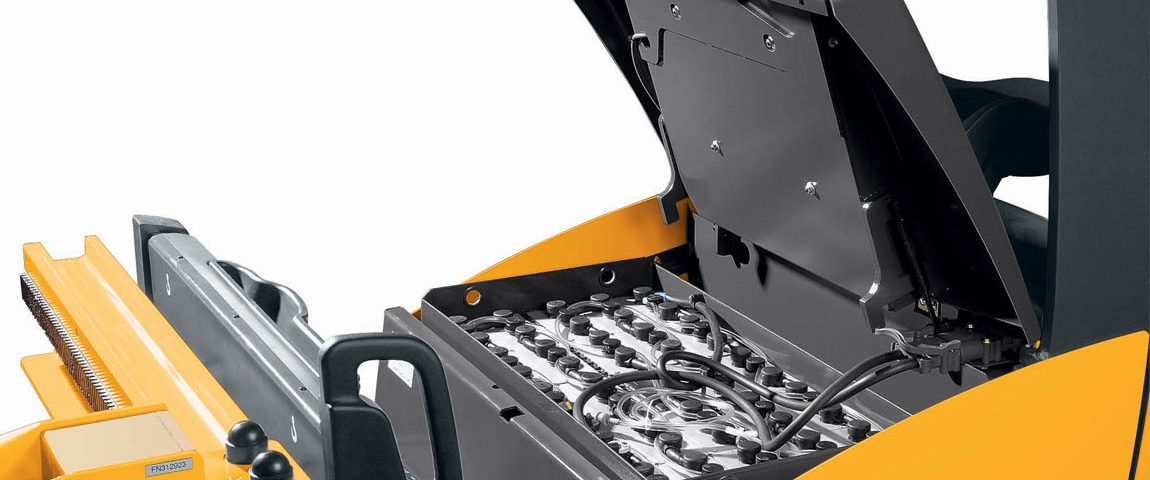When first learning how to charge electric forklift batteries, it is beneficial to follow a standard process to ensure proper handling and care. The forklift battery differs from standard lead acid batteries and has different servicing requirements. These heavy-duty forklift batteries can last several years if properly cared for with regular maintenance.
Read on to discover electric forklift battery charging instructions and top tips, along with general best practices.
Proper Handling and Care of Electric Forklift Batteries
In order to help prevent injury, proper handling of forklift batteries is required. Below are some considerations that should be taken:
- Lift truck batteries are heavy – a person should not attempt to handle a battery alone.
- Wear appropriate clothing – steel toe shoes, safety glasses and gloves should always be worn. Be sure to also remove all jewelry.
- Make sure your facility is equipped with working eye and washing stations in case of accidental contact with battery acid.
When Should Your Forklift Battery Be Recharged?
Charging an electric forklift battery at the right time is important. Although it may seem easy to charge a battery when it is convenient, proper maintenance requires battery charging at certain times to certain degrees. It is important to charge a forklift battery only when the charge is below 30% as opposed to scheduling battery charging at set times.
Also, be sure to avoid over or undercharging the battery as this can shorten the battery’s lifespan. Establishing an area for battery charging is also critical. And as standard process, make sure that the charger is turned off before connecting or disconnecting the battery.
Forklift Battery Charging Instructions
Be sure to follow these critical forklift battery charging instructions:
- The charger must match the battery. In other words, it must have the correct output voltage. Is the voltage 12, 24, 36, etc.?
- It is also important that the Ampere Hour rating is within 10% of the battery’s AH rating.
- The charger cables must be in good working condition. For a proper connection, the connectors should not be damaged or cracked.
- Maintain a watering log. A battery manufacturer will want to see watering records if a warranty claim is needed.
- Limit battery charging. Most warranties are null if the battery is charged more than three hundred times a year for five consecutive years. Take care not to overcharge the battery as this can shorten its life.
- Allow ample charging time. A full eight-hour charge will properly distribute the acid throughout the battery.
- Equalize charge. This longer charging cycle performed once a week will rebalance the acid concentration.
- Add water to the battery after it has been charged, preferably after it has cooled down.
Routine Maintenance for Electric Forklift Batteries
Always keep forklift batteries at a safe temperature. To prolong the life of a battery, try to maintain the battery storage temperature at less than 113°F.
Batteries must regularly be equalized to avoid stratification, which is a layering of sulfuric acid inside the battery cells. When battery acid becomes more concentrated at the bottom of a cell, this causes the acid and water to become stratified and unable to hold a charge. Equalizing rebalances the concentration.
Finally, check the fluid levels every five charges to ensure the forklift battery has the proper amount of water.
Charging an electric forklift battery is not complicated; it just requires safety precautions and a consistent, orderly process. As forklift batteries differ from standard lead batteries, maintenance needs are different. By safely using manufacturer guidelines and performing routine maintenance, you can properly charge your battery and prolong its lifespan.
If you have questions or need assistance in selecting the right electric forklift battery, contact one of our knowledgeable sales reps today!

